Health systems in the developed world are becoming unsustainable and health inequalities continue to widen around the globe. Applying asset-based approaches offers a new way of enhancing tangible and intangible collective attributes, such as: building capacity, strengthening resilience, and empowering individuals, communities and systems to promote women's and men's health and impact social change. This study's purpose was to develop and apply a set of Health Asset Practice (HAP) principles and three HAP tools on four health-related projects, and to determine the relevance and benefit of using these tools. The design for this qualitative, action research study was based on the participatory action research methodology and the multiple case method involving four bounded cases and four units of analysis. Data collection involved the application of three health asset-based tools. Data analysis focused on matching data collection outputs to four theoretical propositions, and cross-case analysis. Study findings showed that health asset practice tools can be used at various stages of a health promotion project for educational, prospective and retrospective purposes, i.e., 1) When initially gaining insight about asset-based approaches, 2) When preparing for a health promotion project, 3) When developing assets and deploying resources, and 4) When identifying what has been learned throughout a project life cycle. The study concluded that the integrated application of health asset practice principles and tools promotes the realization of benefit regardless of variations in project size, scope, context, culture and/or location. This study made a scientific contribution by codifying the application of health asset practice on four health promotion projects. Further research could determine the extent to which health asset practice enables everyone at all levels and in all settings to be well, while also helping to inform health system improvement and sustainability.
Health promotion, Asset based practice, Health inequalities, Multiple case method, Qualitative research
Historically, the initial step to promoting health involved identifying the needs of individuals, communities, or health systems, i.e. deficits. This was followed by policy makers, or other stakeholders, deciding on how to fill these gaps. Examples of this "traditional deficit thinking and doing" mindset include: emphasizing problems, seeing people as clients and consumers receiving services, treating people as passive participants that you fix or do something to, and focusing on illness [1-4]. Applying this deficit approach to solving problems can lead to unilateral decisions that disempower the populations that are supposed to benefit from them [1-4].
This traditional way of thinking and doing in the health field has not achieved the positive impact that had been anticipated [5]. Countries around the world are stating that they can no longer continually increase their healthcare budgets to meet, or ideally improve, the health outcomes of their populations. Health systems in the developed world are becoming unsustainable and health inequalities continue to widen around the globe [6].
Previously assets have been perceived strictly as an economic commodity, however over the last three decades the approach of asset development has been explored in a variety of settings such as: community development, youth developmental relationships, peacekeeping, and workforce development [7-9]. More recently, there is a movement to expand asset development into public health promotion and health improvement [2,3,8,10-12].
Asset development approaches offer a "new way of thinking and practicing" in health care, referred to by the Investigators as Health Asset Practice. These approaches have been shown to minimize negative outcomes, address health inequalities, and promote health status [2,3,8,13]. Such approaches focus on enhancing both tangible and intangible collective attributes and resources that populations have at their disposal, i.e. positive assets [14]. Morgan and Ziglio [6] define a health asset as any factor, attribute or resource, which enhances the ability of individuals, organizations, communities, populations, and/or social systems to maintain and sustain health and wellbeing, and to help reduce health inequities. In contrast to the deficit approach, examples of asset based thinking and practice include: a) Starting with evaluating personal assets and resources in a community, b) Aligning strengths with opportunities, c) Investing in women and men as active participants and co-producers with something to contribute, d) Emphasizing the role of civil society, e) Helping people take control of their lives, f) Supporting people to develop their potential, and g) Focusing on positive health and wellbeing [1-4].
The purpose of this qualitative, action research [15] study was to develop and apply a set of Health Asset Practice (HAP) principles and three HAP tools on four health-related projects, and to determine the relevance and benefit of using these tools. The set of five HAP principles are intended to influence and guide the behaviour of participants in all settings, and at all levels to: 1) Leverage all available assets, i.e., attributes, competencies, factors, resources, and knowledge; 2) Consider all potential determinants of health, such as: biological, psychological, social, political, environmental, economic, and technical; 3) Deploy the necessary resources to build capacity and enable everyone to be in control of their destiny; 4) Be open and willing to share knowledge and power, and 5) Collaborate and practice inclusive, equitable decision making. Applying these HAP principles can enable everyone to develop and sustain health and wellbeing, and to help reduce health inequities, i.e. to be well. The three HAP tools include: 1) HAP Principles Scorecard (two versions, PS1 and PS2), 2) Stakeholder Engagement Tool (SE), and 3) Self-Assessment Tool.
In support of linking science to practice and action learning, the design for this qualitative, action research study [15,16] was based on Greenwood, Whyte and Harkavy's participatory action research methodology [15] and Yin's multiple case method [17]. The study, which was conducted in 2015 and 2016, included four bounded cases (Figure 1) situated in three different countries: Kenya, India and Sweden. Four Investigators, each familiar with one of the cases, conducted the research.
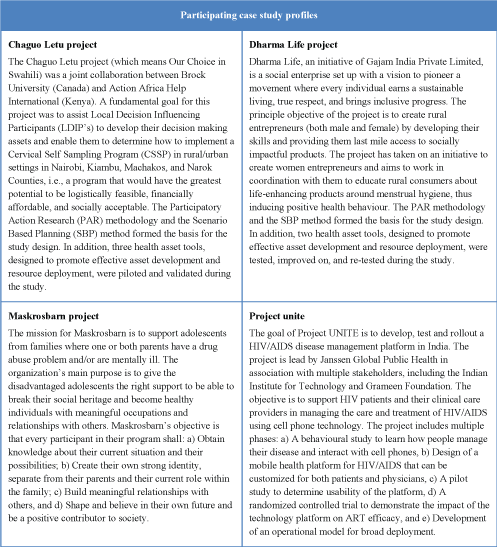 Figure 1: Case study profiles. View Figure 1
Figure 1: Case study profiles. View Figure 1
Each bounded case represents a single project in which an Investigator evaluated the five HAP principles and application of three HAP tools to support development of health assets for the promotion of health and wellbeing. Accordingly, each of these cases included four embedded units of analysis: 1) HAP principles, 2) HAP Principles Scorecard application processes, 3) Enabling practices and tools (i.e. Stakeholder Engagement Tool and Self Assessment Tool), and 4) Patterns, commonalities and differences (Figure 2).
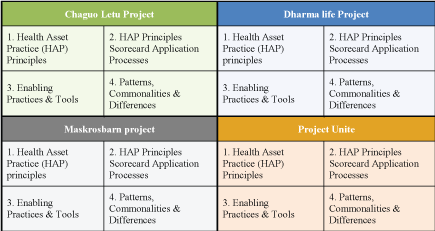 Figure 2: Four bounded cases with four units of analysis. View Figure 2
Figure 2: Four bounded cases with four units of analysis. View Figure 2
Consistent with the qualitative research paradigm of constructivism [18] and the case method [17], data collected during the course of this study resulted from discussions with both project leaders and project beneficiaries and recording their comments. This occurred during in-person meetings and/or focus groups (depending on the case) while administering the three tools: 1) HAP Principles Scorecard (two versions, PS1 and PS2), 2) Stakeholder Engagement Tool (SE), and 3) Self-Assessment Tool (two versions, SAT1 and SAT2). Following reflection on the initial application of the tools, Investigators collectively created improved versions of the HAP Principles Scorecard (PS2) and the Self-Assessment Tool (SAT2). Figure 3 summarizes the study population and shows which versions of the tools were applied in each of the four bounded cases, and whether they were used prospectively and/or retrospectively.
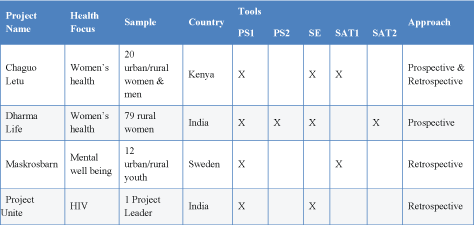 Figure 3: Study population, data collection tools and approach. View Figure 3
Figure 3: Study population, data collection tools and approach. View Figure 3
Data analysis focused on matching data collection outputs to the theoretical propositions [17] that were developed by the project team. This involved a three-step process:
Theoretical proposition development: developed a general outcome statement for each unit of analysis that was felt to represent the anticipated result of the analysis. These statements were based on the results of a review of health asset literature. Four theoretical propositions were developed in total, one for each of the units of analysis (see results section).
Explanation building: incorporated all data collection outputs (i.e., documents reviewed, interview notes, personal observations, and journal entries) into the preparation of a descriptive explanation of what happened with respect to the four units of analysis for each of the four bounded cases.
Matching with theoretical propositions: provided an interpretive generalization of how the explanation supported (or rejected) the theoretical proposition, i.e., discussion on how it did, or did not, match.
Study results are summarized by the four embedded units of analysis, which include the following: 1) HAP principles, 2) HAP Principles Scorecard application processes, 3) Enabling practices and tools (i.e., Stakeholder Engagement Tool and Self Assessment Tool), and 4) Patterns, commonalities and differences.
Each of the four Investigators introduced the five HAP principles to their respective project leaders either during their project management meetings or during separate interviews. Dharma Life also conducted two kinds of focus groups, one with entrepreneurs to discuss the principles and one with the village community, where story telling was used to clarify the meaning of the principles.
The examination of HAP principles positively contributes to project participants' thinking, beliefs, behaviours and/or actions.
Results showed a match with the theoretical proposition for all cases. Talking about the HAP principles changed participants' perceptions about the importance and potential of these principles. Comments made by participants demonstrated a greater awareness for the need and benefit of applying the principles. Some participants on both the Chaguo Letu Project and Dharma Life Project identified activities and behaviours that would improve the explanation and understanding of the principles on future project phases. For example, a Chaguo Letu project participant recommended sharing more information about cervical cancer to empower women to make more informed decisions about being screened for cervical cancer. A Maskrosbarn project participant expressed interest in integrating the HAP principles as part of their management review process and to assess program impact. Project Unite acknowledged the valuable insight gained from applying the principles and identified opportunities to apply them to potentially improve their project in subsequent phases.
The HAP principles were found to be relevant and appropriate to all cases, however they required revision and contextual descriptions to make them better understood. In the case of the Dharma Life Project, it was discovered that contextual descriptions needed further alignment with local/cultural beliefs. Following reflection on the results, the Investigators made adjustments to the principles and developed contextual descriptions with simple statements that beneficiaries could relate to, such as: a) I have what I need to be well, b) Together we are thinking of everything, c) I am master of my own destiny, d) We are sharing authority, and e) We are all part of the decision process.
Each of the Investigators introduced the HAP Principles Scorecard (PS1) to the respective project leaders, either during their meetings or during separate interviews. The application of PS1 involved two steps. Initially participants were asked to assess the relevance of each principle on a scale of 1 to 10 (10 was considered extremely relevant). This was followed with an assessment of the extent to which the principles were demonstrated by applying a scale of 1 to 10 (10 demonstrated very active compliance).
The Maskrosbarn Project and Project Unite applied PS1 retrospectively. The Chaguo Letu Project applied the Scorecard both retrospectively, to assess past behaviour, and also prospectively as a planning tool. The Dharma Life Project applied the tool only prospectively, given that the project was in the initiation phase. This variation in timing proved to be beneficial since it allowed the Investigators to reflect on participant feedback, make tool adjustments, and re-evaluate the adequacy of the changes. For example, the Dharma Life Project and the Chaguo Letu Project both received feedback that it was difficult to apply the 1 to 10 assessment scale on the HAP Principles Scorecard (PS1). In response to this information, the Dharma Life Project (given that it was still being implemented) was able to apply the second version of the Scorecard (PS2) in three phases of the study using different assessment scales, i.e. 1 to 7, and 1 to 4. The 1 to 4 scale was felt to be the easiest to apply, while still meeting the objective of facilitating a discussion to identify activities to further demonstrate the HAP principles (Figure 4).
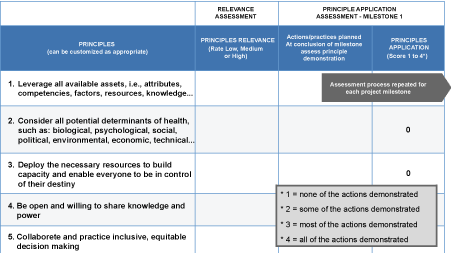 Figure 4: HAP principles scorecard version 2. View Figure 4
Figure 4: HAP principles scorecard version 2. View Figure 4
The application of a HAP scorecard provides an effective means of: a) Retrospectively assessing the degree to which HAP principles were demonstrated, and b) Prospectively planning for how HAP principles should be applied on future phases of a project.
The Chaguo Letu Project, Maskrosbarn Project, and Project Unite found PS1 an effective tool to retrospectively assess the degree of HAP principles demonstration on a project. The Chaguo Letu and Dharma Life projects found PS1 to be an effective tool for prospective application. Dharma Life was able to show PS2 to be more effective than the previous version of the tool when applied prospectively.
All projects found the 1 to 10 scale difficult to understand and apply, both for assessing relevance of the principle and level of principle demonstration. There was confusion as to whether or not principles should be assessed relative to one another or independently. The Investigators responded to this feedback by adjusting the relevance scale to Low/Medium/High (Figure 4). Assessing the level of principle demonstration was also changed to apply a scale of 1 to 4, which Dharma Life found to be the most simple to use, and easy to comprehend.
The Investigators from the Chaguo Letu Project and Project Unite reviewed the SE Tool with project leadership on a retrospective basis. Reflecting on each of the 15 categories of stakeholders (Figure 5), they conducted a gap analysis to identify which categories were/were not, represented on their projects.
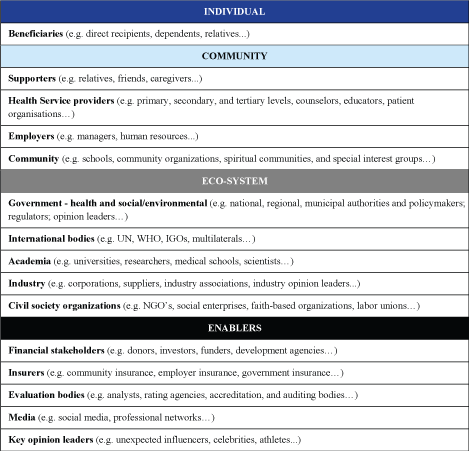 Figure 5: Stakeholder engagement tool. View Figure 5
Figure 5: Stakeholder engagement tool. View Figure 5
Given that Dharma Life was in the project initiation phase at the time of this study, they applied the SE Tool in a prospective manner to identify and select relevant stakeholders to be involved. In depth interviews were conducted with four stakeholders that tracked and monitored the level of involvement of the selected stakeholders in various project activities. While applying the SE Tool, Dharma Life project leaders recognized the importance of having clear, comprehensive, step-by-step instructions to assist with applying the SE Tool to its full potential.
The Chaguo Letu Project and the Maskrosbarn Project applied the first version of the SAT tool (SAT1). The Chaguo Letu Project applied SAT1 at a meeting of 12 beneficiaries to assess the extent to which the HAP principles had been demonstrated during phase one of their project. Participants' reactions made it evident that the behaviour statements were not well understood. For example, participants did not fully understand the context for words such as empowerment or sharing power. Minor adjustments were made to SAT1 prior to the second application by 12 beneficiaries during a meeting with Chaguo Letu project participants. Some of the statements needed further clarification to complete the exercise. The Maskrosbarn Project Investigator reviewed the SAT1 with project leadership to get their perspective on the application of this instrument to collect beneficiaries' feedback. The Maskrosbarn Project had been using a similar tool to solicit feedback from the youth in their program allowing them to assess their progress in developing personal assets over four years, as well as evaluating program effectiveness.
Given the difficulties that had been experienced in the first two attempts at using SAT1, Investigators reassessed the behavioural statements and made significant revisions creating a second version of the Tool (SAT2). Leveraging the learning gained from review of the Maskrosbarn instrument, changes were made to better align with the contextual HAP principle statements and to incorporate simple/relevant language in the form of behavioural statements, such as: a) I was provided the knowledge and things I needed to make the right choices for me, b) My cultural background was taken into consideration when we were making changes, c) People did no pass judgment on what I said or did, d) I felt I had an equal say in what happened, and e) I was allowed to influence the final decisions that were made. The Dharma Life Project then applied SAT2 twice in two meetings to collect participant feedback from 20 and 10 participants respectively.
The incorporation of HAP tools, and their associated practices, support a project team to fulfill project objectives and achieve desired outcomes.
Following reflection on the application of all three tools applied, Investigators felt there was a match with this theoretical proposition. The PS1 and PS2 were shown to support project teams to fulfill the objective of assessing the level of HAP principles demonstration on a project. The SE Tool allowed project leadership to identify: which types of stakeholders should be engaged on a project, when they should be engaged, and what role they should play. The SAT2 Tool was found to be very effective in the Dharma Life Project to assess and understand the journey of asset development for a participant.
Explanations pertaining to how the three HAP tools were applied have been discussed in the previous three units of analysis.
The application of the HAP principles, HAP Principles Scorecard and enabling practices and tools promotes the realization of benefit regardless of variations in size, scope, context, culture and/or geography.
Following reflection on the outputs of data analysis for all four bounded cases, Investigators agreed that following changes in the design of the tools to accommodate comprehension needs and cultural differences, all three tools and practices applied during this study promoted the realization of benefits, regardless of the differences in size, scope, context, or location of the four cases. Fundamental benefits included: increased awareness of HAP principles, the desire to change behaviour to better demonstrate HAP principles, realization of the importance of diverse stakeholder engagement, and recognition of the need to assess participant feedback using simple language to ensure HAP needs are met. Further details are provided in the conclusion section.
The purpose of this qualitative, action research [15,16] study was to develop, apply and assess a set of Health Asset Practice (HAP) principles and three HAP tools to determine their relevance and benefit on four health related projects. Applying the case method, Investigators conducted the following activities:
• Refinement of the HAP principles.
• Development, testing and refinement of the HAP Principles Scorecard.
• Application of two versions of the HAP Principles Scorecard to retrospectively assess the level of HAP principle demonstration and to prospectively plan how principle demonstration and adoption could be further enhanced.
• Development, testing and refinement of the Stakeholder Engagement Tool.
• Development, testing, and refinement of the Self Assessment Tool.
All of these tools were applied in slightly different ways, i.e. for planning purposes, as educational and awareness building tools, and/or retrospective assessment on the degree to which HAP principles/behaviours were demonstrated. As part of their application, they were modified to align with participants' needs as required. This level of customization demonstrated the flexibility of the tools and their ability to be adapted to diverse needs on four different cases, while still providing benefit.
Applying cross-case analysis [17] in this study was a complex endeavour, however this approach enabled the Investigators to identify a number of commonalities and differences across cases. Ongoing reflection [16] enabled the development of robust HAP principles and tools that were applicable across the four bounded cases, even though some customization was required to further align the tools with cultural differences. The importance of stakeholder engagement in the testing of HAP tools was a key determinant for development of robust HAP principles and tools.
As stated in the introduction, asset development approaches offer a new way of thinking and practicing and have shown to promote health status and minimize negative outcomes [2,3,8,13]. As proposed, the five HAP principles did influence and guide the behaviour of those individuals participating on two of the cases that applied the tools in a prospective manner. They: 1) Leveraged available assets, 2) Considered determinants that could impact their projects, 3) Deployed necessary resources, 4) Were open and willing to share knowledge and power, and 5) Collaborated and practiced inclusive decision making. However, this retrospective case study did not have the opportunity to assess if asset-based thinking and practice had a positive impact on the outcomes of the cases, i.e. did HAP promote health and wellbeing. Given the timing of the study, quantification of the degree of impact applying HAP thinking and practicing on project outcomes was not possible. This would have required prospective application of the tools on all projects, followed with retrospective assessment of their impact throughout the project life cycle, i.e. formative and summative impact analysis [19].
During a final reflective workshop, the Investigators identified the following study conclusions:
• The examination of HAP principles positively contributes to project participants' thinking, beliefs, behaviours and/or actions; talking about the principles changes participants' perceptions of what is important and/or what is possible, and increases their awareness.
• The HAP Scorecard is a powerful learning and assessment tool. Both prospective and retrospective applications of the Scorecard are effective. However, it is best used by project management at multiple time-points: first to plan how HAP principles could be utilized, followed by retrospective assessment at each project stage (i.e. from conception to post completion) to determine the extent to which HAP activities are demonstrated.
• Use of the Stakeholder Engagement Tool by project management throughout the project cycle would ensure that all relevant stakeholders are engaged at the appropriate time, and provide a baseline for tracking who is doing what, when, and, how well they are performing.
• By applying the Self-Assessment Tool, beneficiaries are able to visualize how they are building HAP capacity. Ongoing use of this tool provides the project management team diagnostic capability for a more objective view on beneficiaries' asset development journey.
• HAP tools need to be customizable to meet the specific needs of projects and participants (e.g. be culturally sensitive and use appropriate language), and have an educational/instruction for use component.
• The HAP tools can be used at various stages of a health improvement project for both prospective and retrospective purposes, such as: 1) When initially gaining insight about asset-based approaches, 2) When preparing to start a health project, 3) When practicing asset development, and 4) When identifying what has been learned about HAP during all project life cycles.
• The integrated application of the HAP principles, the HAP Principles Scorecard, SE Tool, and SAT Tool promotes the realization of benefit regardless of variations in project size, scope, context, culture and/or location.
The study Investigators feel this research study has made an initial contribution in the area of codifying the application of HAP principles and enabling tools on health projects. Specific recommendations for further research and action include the following:
• To conduct further research on the revised HAP tools to assess their applicability on other health promotion projects in different situations/locations.
• To develop detailed, step-by-step Instructions for Use (IFU) documents to accompany all tools developed on this study.
• To conduct additional work to develop and test other tools that would enable HAP implementation and assessment on future projects. For example, separate HAP principles tools for: 1) HAP principle education, 2) Prospective planning, and 3) Retrospective assessment.
• To develop a knowledge repository/exchange to support broader application of HAP development approaches and tools.
This additional research will be important to further develop the science of health asset practice, however equally important will be the determination of how HAP principles and tools can be incorporated into future health promotion and sustainable development projects. Further exploration is essential to: a) Identify which key enablers are needed to promote successful implementation of HAP thinking and practice (e.g., diverse stakeholder engagement, HAP education, assessing impact, etc.), as well as b) Investigate how the principles and tools can be aligned with existing project management phases/processes. This work would go a long way to determining the extent to which health asset practice changes behaviour and builds capacity for promoting health and well being. Study Investigators believe that the outputs from these efforts would inspire and mobilize different actors to value and articulate the importance of HAP, and in so doing, they could play an integral part in health promotion, along with helping to inform health system improvement and sustainability.
Individuals providing input to this retrospective case study were fully informed about the research process and its risks and signed an informed consent form.